PetesPockets55
Bronze Member
- Joined
- Apr 18, 2013
- Messages
- 1,728
- Reaction score
- 3,142
- Golden Thread
- 0
- Location
- Indian River Co., Fl
- Detector(s) used
- AT MAX & Carrot, Nokta Pulse Dice (:
- Primary Interest:
- All Treasure Hunting
- #1
Thread Owner
I'm hoping someone can shed some light on this old un-insulated lead pipe with copper strands on the inside.
On a whim I stopped at one of the overflow parking areas for the Old Dodgertown spring training camp to try my luck with my AT Max. Within 15' of my vehicle, my first signal turned out to be a spent rifle cartridge. Seemed only a little odd since the military had a training base in this sleepy little town during WWII. Old bombs, anti-tank traps, land mines etc. are found each year on the beaches. (Ft. Pierce is next door and has the UDT Seal museum). I'm thinking this area will be a hotbed of spent cartridges. Nope.
I spent the next hour or so picking up nothing but trash until on my return I got about 50' from my vehicle and had a strong signal about 8-10" deep. First thing out of the hole was a ragged piece of lead. Then I saw copper strands of wire and a pipe going straight down. When I finally got a piece cut away I realized the pipe was lead. No insulation anywhere. Not the outside of the lead pipe, not inside and not around the individual strands of copper. It is about 3/4" in diameter with 30-40 strands inside, and each strand is about the same thickness as a credit card (1mm/18ga?)
Does anyone know what this could be used for? Can't be for conducting electricity without any insulation but maybe radar or other low voltage transmissions?
I'm guessing this has something to do with the military installation here in the 40's. But anything electrical usually has insulation around the metal.
When I got home with a magnifying glass I saw "42 R A" on the cartridge. A quick search told me it was military (with only a date) and the RA indicates it was produced by the Remington Arms co. out of Conn.
Thanks in advance for any insight. PP55
On a whim I stopped at one of the overflow parking areas for the Old Dodgertown spring training camp to try my luck with my AT Max. Within 15' of my vehicle, my first signal turned out to be a spent rifle cartridge. Seemed only a little odd since the military had a training base in this sleepy little town during WWII. Old bombs, anti-tank traps, land mines etc. are found each year on the beaches. (Ft. Pierce is next door and has the UDT Seal museum). I'm thinking this area will be a hotbed of spent cartridges. Nope.
I spent the next hour or so picking up nothing but trash until on my return I got about 50' from my vehicle and had a strong signal about 8-10" deep. First thing out of the hole was a ragged piece of lead. Then I saw copper strands of wire and a pipe going straight down. When I finally got a piece cut away I realized the pipe was lead. No insulation anywhere. Not the outside of the lead pipe, not inside and not around the individual strands of copper. It is about 3/4" in diameter with 30-40 strands inside, and each strand is about the same thickness as a credit card (1mm/18ga?)
Does anyone know what this could be used for? Can't be for conducting electricity without any insulation but maybe radar or other low voltage transmissions?
I'm guessing this has something to do with the military installation here in the 40's. But anything electrical usually has insulation around the metal.
When I got home with a magnifying glass I saw "42 R A" on the cartridge. A quick search told me it was military (with only a date) and the RA indicates it was produced by the Remington Arms co. out of Conn.
Thanks in advance for any insight. PP55
Attachments
-
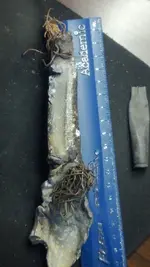 LeadPipe_ruler2.webp57 KB · Views: 62
LeadPipe_ruler2.webp57 KB · Views: 62 -
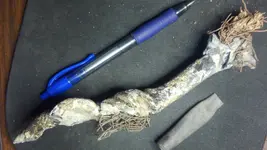 LeadPipe_Cartridge3.webp188 KB · Views: 61
LeadPipe_Cartridge3.webp188 KB · Views: 61 -
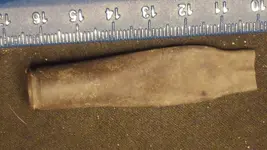 CartridgeWithRuler1.webp159.8 KB · Views: 60
CartridgeWithRuler1.webp159.8 KB · Views: 60 -
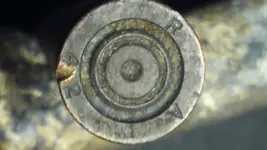 CartridgeEnd1.webp80.6 KB · Views: 59
CartridgeEnd1.webp80.6 KB · Views: 59 -
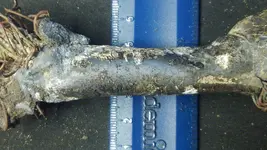 LeadPipe_MidShaftWidthRuler1.webp244.5 KB · Views: 59
LeadPipe_MidShaftWidthRuler1.webp244.5 KB · Views: 59 -
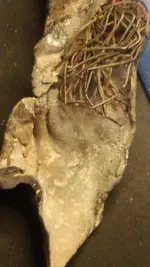 LeadPipe_wideEnd1.webp54.9 KB · Views: 64
LeadPipe_wideEnd1.webp54.9 KB · Views: 64 -
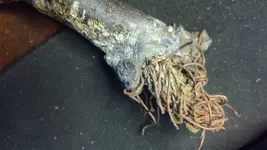 LeadPipe_NarrowEnd1Clearish.webp149.9 KB · Views: 66
LeadPipe_NarrowEnd1Clearish.webp149.9 KB · Views: 66 -
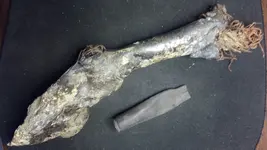 LeadPipe_Cartridge1.webp155.2 KB · Views: 66
LeadPipe_Cartridge1.webp155.2 KB · Views: 66



